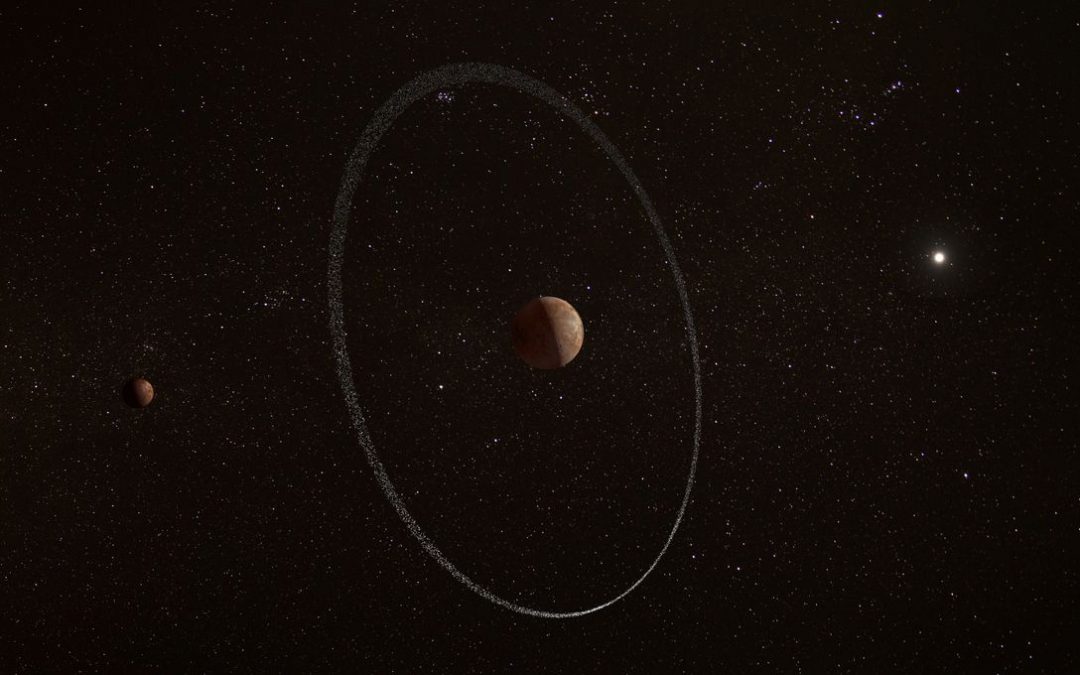The edge of the Solar System is full of surprises. From Pluto’s icy heart to the peculiar shape of Arrokoth, and now the unexpected rings of Quaoar. This newly discovered ring is located much further out than the Roche limit for the dwarf planet, overturning the classical notion that dense rings survive only inside the Roche limit of a planetary body.
Thanks to the European Space Agency’s exoplanet-hunting telescope CHEOPS, we can now add the unusual rings of Quaoar to the list. CHEOPS observed a stellar occultation: Quaoar passed in front of the star, blocking its light. This approach is very useful for studying distant faint objects, and it was indeed successful.
Quaoar has a radius of 555 kilometers (345 miles) and it is orbited by a small moon, called Weywot, of about 160 kilometers (100 miles) in diameter. Weiwot orbits at about 14,500 kilometers (9,000 miles) or about 24 radii of Quaoar. This newly discovered ring is located at 7.5 radii.
The location of stars needs to be known pretty well, and the motion of the observing telescope too. This was taken care of by Gaia, another ESA mission, which has mapped the position of billions of stars in the Milky Way. CHEOPS orbits about 713 kilometers (443 miles) in altitude, and due to solar activity, the density increases and decreases in unexpected ways.
The discovery is a surprise, as rings are supposed to coalesce into moons, something that would take just decades. So it is not clear how these have survived, and it is certain that planetary scientists will pore over it to understand them.
The discovery of Quaoar’s rings is a testament to the power of modern astronomy and the incredible things we can find when we look to the edge of the Solar System.
Source: www.iflscience.com
